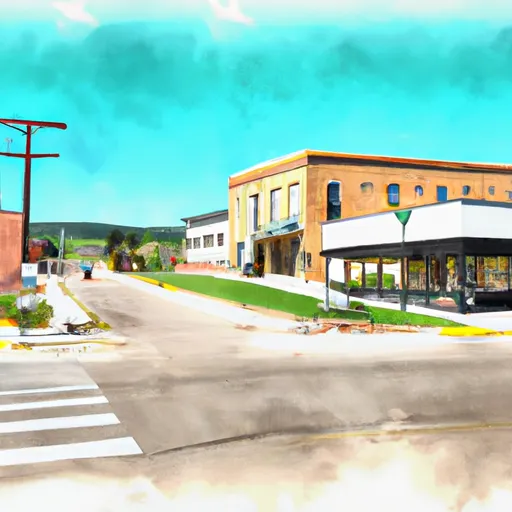-
 Snoflo Premium
Snoflo Premium
Get unlimited access to all our content
With no Ad interruptions! - Start Your Free Trial Login with existing account
Martin-City
Eden Index
Climate
7.5
•
Recreation
6.1
•
Community
•
Safeguard
5.1/10

Martin-City, Montana is a small town located in the Flathead County. The climate in this region is classified as a continental climate, characterized by cold winters and warm summers. Average temperatures range from 20°F (-7°C) in winter to 80°F (27°C) in summer. The area receives significant snowfall during the winter months, offering opportunities for winter sports enthusiasts.
Hydrologically, Martin-City is surrounded by pristine rivers and lakes. The Flathead River, renowned for its scenic beauty, flows nearby and provides ample fishing opportunities for anglers. The region is also home to numerous smaller lakes and streams, perfect for boating, kayaking, and paddleboarding.
The outdoor recreation opportunities in Martin-City are abundant and diverse. The surrounding forests offer excellent hiking and camping experiences, with numerous trails that wind through breathtaking landscapes. Nature lovers can also enjoy birdwatching, wildlife photography, and wildlife viewing, as the area is home to diverse flora and fauna.
Overall, Martin-City, Montana offers a picturesque setting with a continental climate, hydrologically rich surroundings, and a plethora of outdoor activities, making it an ideal destination for nature enthusiasts and outdoor adventurers.
What is the Eden Index?
The Snoflo Eden Index serves as a comprehensive rating system for regions, evaluating their desirability through a holistic assessment of climate health, outdoor recreation opportunities, and natural disaster risk, acknowledging the profound impact of these factors on livability and well-being.
Climate Health Indicator (CHI): 7.5
Martin-City receives approximately
839mm of rain per year,
with humidity levels near 69%
and air temperatures averaging around
5°C.
Martin-City has a plant hardyness factor of
5, meaning
plants and agriculture in this region thrive during a short period during spring and early summer. Most
plants will die off during the colder winter months.
By considering the ideal temperature range, reliable water supplies, clean air, and stable seasonal rain or snowpacks, the Climate Health Indicator (CHI) underscores the significance of a healthy climate as the foundation for quality living.
A healthy climate is paramount for ensuring a high quality of life and livability in a region, fostering both physical well-being and environmental harmony. This can be characterized by ideal temperatures, reliable access to water supplies, clean air, and consistent seasonal rain or snowpacks.
Weather Forecast
Streamflow Conditions
Pend Oreille
Area Rivers
Pend Oreille
Snowpack Depths
Pend Oreille
Reservoir Storage Capacity
Pend Oreille
Groundwater Levels
Recreational Opportunity Index (ROI): 6.1
The Recreational Opportunity Index (ROI) recognizes the value of outdoor recreational options, such as parks, hiking trails, camping sites, and fishing spots, while acknowledging that climate plays a pivotal role in ensuring the comfort and consistency of these experiences.
Access to outdoor recreational opportunities, encompassing activities such as parks, hiking, camping, and fishing, is crucial for overall well-being, and the climate plays a pivotal role in enabling and enhancing these experiences, ensuring that individuals can engage in nature-based activities comfortably and consistently.
Camping Areas
| Campground | Campsites | Reservations | Toilets | Showers | Elevation |
|---|---|---|---|---|---|
| Avalanche Creek - Glacier National Park | 90 | 3,412 ft | |||
| Lost Johnny Point | 30 | 3,576 ft | |||
| Emery Bay | 26 | 3,608 ft | |||
| Wayfarers State Park | 30 | 2,959 ft | |||
| Lid Creek | 30 | 3,581 ft | |||
| Sprague Creek - Glacier National Park | 25 | 3,169 ft | |||
| Fish Creek - Glacier National Park | 180 | 3,225 ft | |||
| Lost Johnny | 5 | 3,562 ft | |||
| Handkerchief Lake | 9 | 3,968 ft | |||
| Murray Bay | 18 | 3,582 ft |
Nearby Fishing
Nearby Ski Areas
Catastrophe Safeguard Index (CSI):
The Catastrophe Safeguard Index (CSI) recognizes that natural disaster risk, encompassing floods, fires, hurricanes, and tornadoes, can drastically affect safety and the overall appeal of an area.
The level of natural disaster risk in a region significantly affects safety and the overall livability, with climate change amplifying these risks by potentially increasing the frequency and intensity of events like floods, fires, hurricanes, and tornadoes, thereby posing substantial challenges to community resilience and well-being.
Community Resilience Indicator (CRI):
The Community Resilience Indicator (CRI) recognizes that education, healthcare, and socioeconomics are crucial to the well-being of a region. The CRI acknowledges the profound impact of these elements on residents' overall quality of life. By evaluating educational resources, healthcare accessibility, and economic inclusivity, the index captures the essential aspects that contribute to a thriving community, fostering resident satisfaction, equity, and social cohesion.

